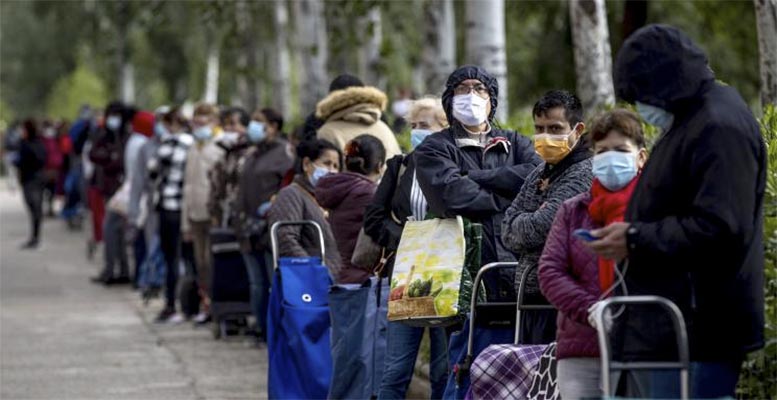Some of the world’s richest countries experienced sharp increases in child poverty between 2014 and 2021, according to data published by UNICEF’s research office Innocenti. Spain’s rate remains stable, but stands at 28%, which leaves our country in 36th place out of 39 (only above the United Kingdom, Turkey and Colombia) in the overall league table of high-income countries – European Union (EU) and Organisation for Economic Co-operation and Development (OECD) – which jointly analyses the current situation of child poverty and its evolution in recent years.
In the table of the current situation of child poverty between 2019 and 2021, our country also ranks 36th, only ahead of Romania within the EU; if only the most recent income data for 2021 were taken into account, Spain is the EU country with the highest child poverty rate.
“In the year 2023, a child poverty rate like this in Spain is unacceptable, and we cannot look away from the situation of any child or adolescent in our country who does not enjoy decent living conditions,” says Gustavo Suárez Pertierra, President of UNICEF Spain.
“Behind these figures are children and adolescents who cannot afford to eat meat, poultry or fish at least once every two days or fruit and vegetables every day, who live in houses without adequate temperature, who do not have adequate clothes, shoes or books, or who cannot participate in leisure activities or go on holiday once a year. This has short, medium and long-term consequences and prevents the fulfilment of many of their rights,” he adds.
According to Report Card 18: Child Poverty in the Midst of Wealth – the latest in a series looking at child well-being in OECD and EU countries – there were still more than 69 million children in these countries at the end of 2021 in households with incomes below 60 per cent of the national median income. In view of the publication of this report, UNICEF Spain has produced a special edition highlighting the situation in our country.
The global report finds that Poland and Slovenia are the countries that are doing best in tackling child poverty – with a reduction of more than 30% – while some of the richest countries are lagging behind, such as France and the UK. Spain improves its figures slightly compared to the baseline period, but ranks 22nd out of 39 in child poverty progress, with a reduction of only 4% between 2014 and 2021 (overall the countries analysed have reduced their child poverty by an average of 8%, or six million fewer children in this situation). In other words, Spain falls into the category of countries that started with high child poverty rates, and whose data do not show a significant improvement, although they remain relatively stable.
Child poverty does not depend too much on countries’ income levels: Spain and Slovenia, for example, have similar per capita income levels; however, Slovenia has a poverty rate of 10%, and Spain 28%. Moreover, in our country the percentage of children in persistent poverty (two or more years in poverty) is the fourth highest of the European countries analysed, above 20% in the period 2017-2019. Also of concern in our country is the rate of material and severe deprivation, which in 2022 was 10.3% and places Spain in sixth place in the EU, tied with France and below Romania, Bulgaria, Hungary, (in Finland and Slovenia this rate is below 2%) and that of child material deprivation*, with Spain in sixth place in the EU with 19.7% of children in this situation (far from the figures for Romania, with 42.5%, but also far from Finland and Sweden, below 4%).





